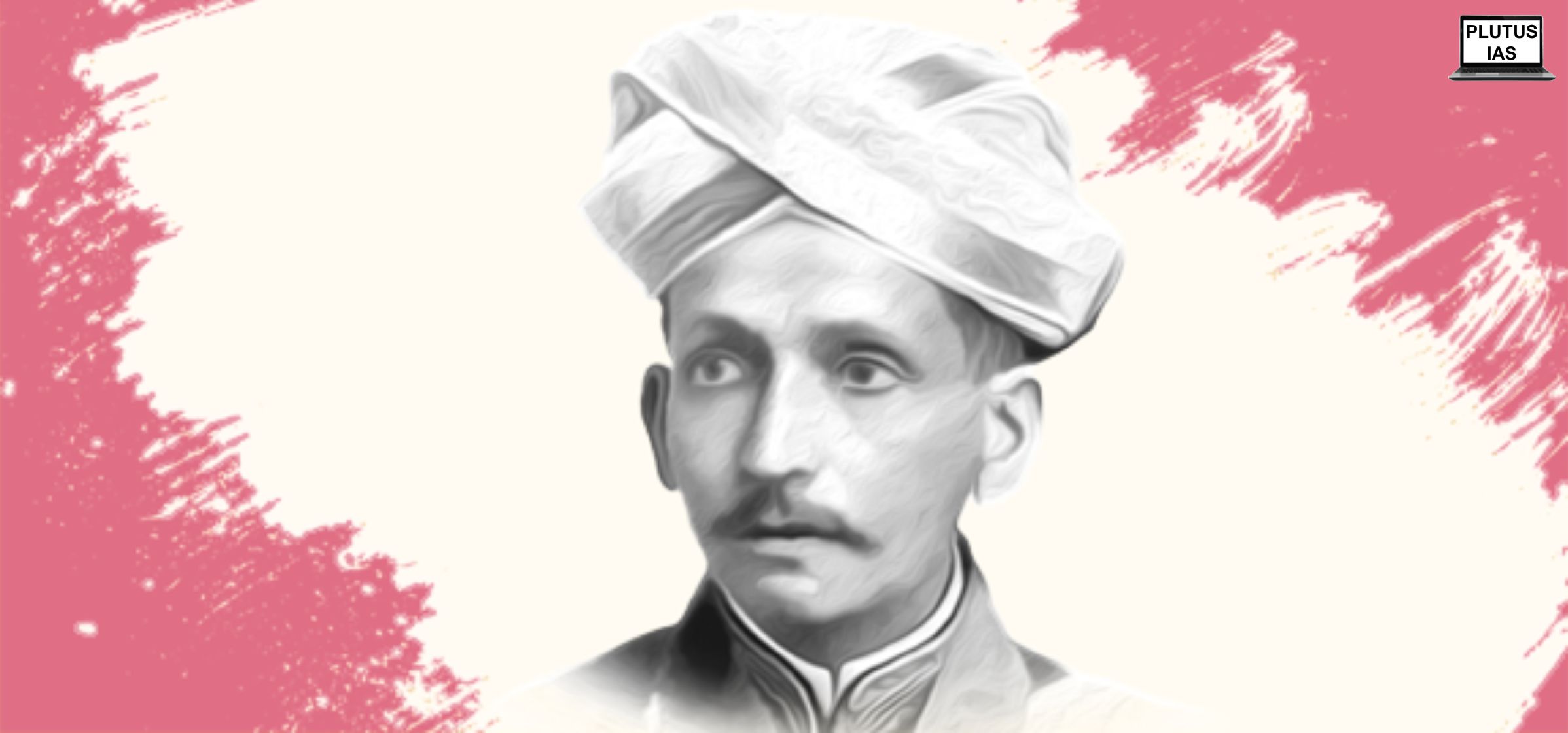18 Sep Sir M Visvesvaraya
This article covers “Daily Current Affairs” and the topic details “Sir M Visvesvaraya”. This topic has relevance in the “Science and Technology” section of the UPSC CSE exam.
For Prelims:
Key details about Sir M Visvesvaraya?
For Mains:
GS2: Science and Technology
Why in the news?
Sir Mokshagundam Visvesvaraya’s birthday was recently celebrated on September 15. He was a civil engineer and administrator during colonial India.
Early Life
- Born on September 15, 1861, in Muddenahalli village of Karnataka, he completed his school education in his hometown.
- Visvesvaraya studied for a Bachelor of Arts at the University of Madras and then pursued a diploma in civil engineering at the College of Science in Pune.
- At 22, he accepted an offer to work as an Assistant Engineer in the Public Works Department (PWD) of the Government of Bombay.

Significant Inventions
- Block System for Irrigation: Sir MV designed and implemented a unique block system for irrigation. This innovative system allowed for better water distribution and control, minimising wastage and maximising efficiency in agricultural irrigation.
- Automated Floodgates: He developed an automated floodgate system that incorporated a sophisticated mechanism to regulate water flow during periods of heavy rains or flooding. This invention greatly helped flood control and prevention, protecting towns and villages from the devastating effects of excessive water.
- Water Supply and Drainage System: Sir MV devised efficient water supply and drainage systems, particularly in urban areas. His designs enabled the effective distribution of clean water to households and the proper disposal of waste, leading to improved sanitation and public health.
- Block Irrigation System: Another notable innovation of Sir MV was the block irrigation system. This system utilised a network of canals and dams to distribute water for agriculture in a controlled and systematic manner, enhancing crop productivity by ensuring a proper water supply.
- Steel Doors: Sir MV introduced the concept of steel doors in various civil engineering projects. His steel doors were known for their durability, strength, and resilience. They proved highly effective in flood control and protection against water-related disasters.
Legacy
- Krishna Raja Sagara Dam:
-
- One of his most significant engineering accomplishments was the design and supervision of the Krishna Raja Sagara Dam in Karnataka.
- Completed in 1931, this dam and its intricate canal system brought about a revolution in irrigation and boosted agricultural productivity in the region.
- Development of Modern Mysore:
-
- Sir MV served as the Dewan (Prime Minister) of Mysore from 1912 to 1918. During his tenure, he played a pivotal role in shaping the modernisation of the state. His visionary policies and administrative reforms transformed Mysore into a progressive region.
- Sir MV implemented critical administrative reforms as the Dewan of Mysore. He focused on health, sanitation, and urban planning, improving the overall quality of life for the people of Mysore. His efforts led to advancements in public health and infrastructure development.
- Education:
-
- Visvesaya believed that the aim of an educational institution should be in line with the “state of the country’s civilisation and of its material prosperity”.
- Sir MV had a strong belief in the importance of education. He was vital in establishing the Government Engineering College in Bangalore (now the Visvesvaraya Technological University) and the University of Mysore. His emphasis on education and skill development paved the way for future engineers.
- After taking voluntary retirement from state service in 1918, he continued work in various capacities and established the Sir Jayachamarajendra Occupational Institute Bangalore in 1943, which was later renamed Sir Jayachamarajendra Polytechnic.
- Engineer’s Day:
-
- Sir MV is celebrated as a legendary civil engineer in India, Sri Lanka, and Tanzania. His birthday, September 15th, is celebrated as Engineer’s Day in these countries, recognising his immense contributions to the field.
Overall, Mokshagundam Visvesvaraya was a pioneering civil engineer in India who contributed significantly to the country’s public works and institutions. He also believed in the importance of education for the country’s development and prosperity.
Sources: PM Modi lauds engineers for contribution to country’s progress
download plutus ias current affairs eng med 18th Sep 2023
Q1. With reference to the Inventions of Sir M. Visvesvaraya, consider the following statements:
- He developed an automated floodgate system that regulated water flow during heavy rains and flooding, aiding in flood control.
- Sir MV designed efficient water supply and drainage systems in urban areas, improving sanitation and public health.
- Sir MV is known for his work in the field of light scattering..
Which of the statements given above is/are correct?
(a) 1 and 2 only
(b) 2 and 3 only
(c) 3 only
(d) None
Q2. Consider the following:
- Sir M Visvesvaraya designed and supervised the Krishna Raja Sagara Dam in Karnataka, which revolutionised irrigation and boosted agricultural productivity.
- As the Dewan (Prime Minister) of Mysore from 1912 to 1918, Sir MV’s visionary policies and administrative reforms transformed Mysore into a progressive region.
- Sir MV is also known for his work in establishing University of Mysore.
How many of the abovementioned statements are correct?
(a) Only one
(b) Only two
(c) All three
(d) None
Q3. Discuss the significant achievements of Sir Mokshagundam Visvesvaraya, particularly focusing on his contributions to civil engineering, administrative reforms, and their impact on regional development.




No Comments